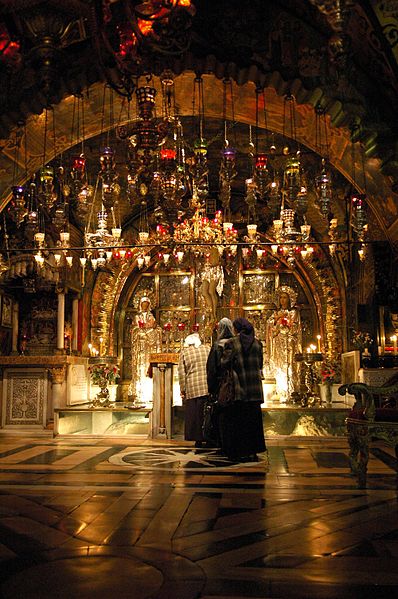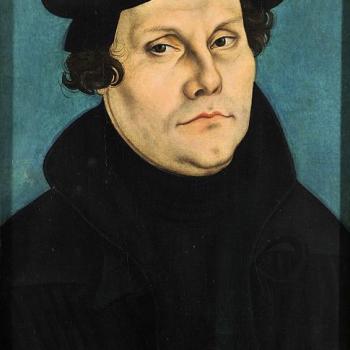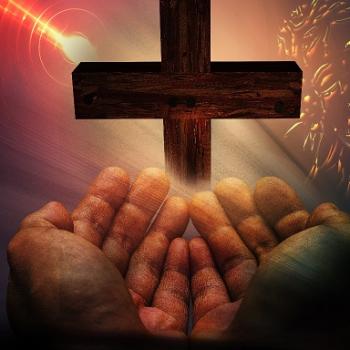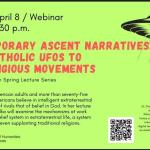The Bible plainly rules out the notion of Jesus being “re-sacrificed”:
Hebrews 7:27 (RSV) He has no need, like those high priests, to offer sacrifices daily, first for his own sins and then for those of the people; he did this once for all when he offered up himself.
Hebrews 9:12 he entered once for all into the Holy Place, taking not the blood of goats and calves but his own blood, thus securing an eternal redemption.
Hebrews 9:24-28 For Christ has entered, not into a sanctuary made with hands, a copy of the true one, but into heaven itself, now to appear in the presence of God on our behalf. [25] Nor was it to offer himself repeatedly, as the high priest enters the Holy Place yearly with blood not his own; [26] for then he would have had to suffer repeatedly since the foundation of the world. But as it is, he has appeared once for all at the end of the age to put away sin by the sacrifice of himself. [27] And just as it is appointed for men to die once, and after that comes judgment, [28] so Christ, having been offered once to bear the sins of many, will appear a second time, not to deal with sin but to save those who are eagerly waiting for him.
The crucifixion was a one-time historical event. But we must keep in mind that Jesus is both a Man and God. He was subject to time in His human nature. In His Divine Nature, however, He is outside of time. Jesus is called “a priest for ever”: not for six hours on the cross only:
Hebrews 5:6 as he says also in another place, “Thou art a priest for ever, after the order of Melchiz’edek.”
Hebrews 6:20 where Jesus has gone as a forerunner on our behalf, having become a high priest for ever after the order of Melchiz’edek.
Hebrews 7:24 but he holds his priesthood permanently, because he continues for ever.
Thus, the Apostle John referred to Jesus in heaven (after His resurrection and ascension) as “a Lamb standing, as though it had been slain”:
Revelation 5:6 And between the throne and the four living creatures and among the elders, I saw a Lamb standing, as though it had been slain, with seven horns and with seven eyes, which are the seven spirits of God sent out into all the earth;
Hebrews 8:1 Now the point in what we are saying is this: we have such a high priest, one who is seated at the right hand of the throne of the Majesty in heaven, (cf. also Heb 9:24 above)
In this sense, the one crucifixion is “eternally present” and supernaturally “brought to us” in the sacrifice of the Mass.
Let’s look at the Council of Trent, Session 22, Chapter II:
And forasmuch as, in this divine sacrifice which is celebrated in the mass, that same Christ is contained and immolated in an unbloody manner, who once offered Himself in a bloody manner on the altar of the cross; the holy Synod teaches, that this sacrifice is truly propitiatory and that by means thereof this is effected, that we obtain mercy, and find grace in seasonable aid, if we draw nigh unto God, contrite and penitent, with a sincere heart and upright faith, with fear and reverence. For the Lord, appeased by the oblation thereof, and granting the grace and gift of penitence, forgives even heinous crimes and sins. For the victim is one and the same, the same now offering by the ministry of priests, who then offered Himself on the cross, the manner alone of offering being different. The fruits indeed of which oblation, of that bloody one to wit, are received most plentifully through this unbloody one; so far is this (latter) from derogating in any way from that (former oblation). Wherefore, not only for the sins, punishments, satisfactions, and other necessities of the faithful who are living, but also for those who are departed in Christ, and who are not as yet fully purified, is it rightly offered, agreeably to a tradition of the apostles.
First of all, there is the differentiation (first sentence) between “unbloody manner” and “once offered Himself in a bloody manner on the altar of the cross” — thus showing that the former is not regarded as the latter, repeated over and over again (as the contra-Catholic reasoning would claim), but rather, a different means of bringing the one sacrifice to us.
Secondly, there is the phrase, “the manner alone of offering being different,” thus showing that it is one sacrifice being re-presented (different “manner”).
Moreover, the phrase, “The fruits indeed of . . . that bloody one to wit, are received most plentifully through this unbloody one” shows that the reference was back to Calvary, whose benefits accrues to those partaking of Holy Communion, not to some imagined “repeated bloody sacrifice.”
To drive home the point in a different way, the Council reiterates, “so far is this (latter) from derogating in any way from that (former oblation).”
That is four distinct proofs that it means exactly what I have said it means, and what is Catholic teaching and doctrine. How anyone could interpret this any differently, perhaps you would be kind enough to explain to me (and us).
See also the plain language of Chapter I:
He, therefore, our God and Lord, though He was about to offer Himself once on the altar of the cross unto God the Father, by means of his death, there to operate an eternal redemption; nevertheless, because that His priesthood was not to be extinguished by His death, in the last supper, on the night in which He was betrayed,–that He might leave, to His own beloved Spouse the Church, a visible sacrifice, such as the nature of man requires, whereby that bloody sacrifice, once to be accomplished on the cross, might be represented, and the memory thereof remain even unto the end of the world, and its salutary virtue be applied to the remission of those sins which we daily commit,–declaring Himself constituted a priest for ever, according to the order of Melchisedech, . . .
There are many places where there may be less difference between us in the doctrine itself than in our respective formulations of it.
Absolutely. And those are good to find and rejoice in. That’s part of my goals in doing my new book of John Wesley quotes: lots of common ground: more than many (if not most or nearly all) Catholics or Methodists (including myself) realized, I’m sure.
Perhaps the language of Trent was not as careful and precise as it should be (one can always argue about style and content of words), but I think a reasonable reading of it arrives at the conclusions I and Catholics hold, and have always held. If not, then I’d like to see your alternate explanation / rebuttal of my four points, and demonstrate what is so unclear about the passage, so that Protestants have been misled through no fault of their own.
I don’t think the language itself is the problem, so much as an interpretation brought to it by those with prior assumptions and premises that are different (and too often, hostile at that). This leads to an incorrect reading of that which is (I contend) objectively sufficient to communicate what we do in fact believe.
I think another important factor in all this is the understanding of the patristic background: the notion of eucharistic sacrifice (in the Catholic sense) was common in the fathers’ writings. So, e.g., J. N. D. Kelly summarized St. Augustine’s view:
The self-same Christ Who was slain there is in a real sense slaughtered daily by the faithful, so that the sacrifice which was offered once for all in bloody form is sacramentally renewed upon our altars with the oblation of His body and blood.
(Early Christian Doctrines, San Francisco: Harper & Row, fifth revised edition, 1978., 454; further sources: Ep. 98:9; cf. C. Faust, 20,18; 20:21)
Not understanding this background, one can misinterpret what something like Trent expressed and come up with this “sacrificed again and again” business. But knowing it, then it is seen as merely further development of what had been believed long since.
Therefore, one of the false premises lies in the denial that the fathers taught eucharistic sacrifice and the same notions in essence as what Trent and Catholic dogma hold.
I can see what you are saying then.
Chemnitz says, “Because the dispensation and participation or Communion of the Eucharist is done in commemoration of the one and only sacrifice of Christ, and because the sacrificial victim, who was once offered on the cross for our sins, is dispensed and taken there, it could for this reason, and with this explanation added, be called a sacrifice, even though Scripture does not so call it.”
Eugene Cunningham wrote:
A man and women get married, once, on their wedding day. Yet, each day, after that, they are ‘married’, though not ‘re-married’ each day. They are not ‘less married’ each day because the initial act of being married is over, in time. Same for the mass. The crucifixion was ‘once’, yet it is also ‘forever’, for what God does, he does forever. It is not so much the event of the crucifixion that saves us (for God is not required to do anything), but Christ, by virtue of Who he is (“God is Salvation”) saves us. The crucifixion was the sign of this, but still not the actual, principle ‘thing’ which saves us.
His offering of Himself sacrificially was finished.
As a man in history, yes. As God, outside of time, no. This was the gist of my post. His being God brings in a “supra-historical” aspect in which time is transcended. This is what Protestants often seem to neglect.
Of course His priesthood is not ended. He remains our Priest as He continues to intercede for us.
Priests not only intercede, but much more to their essence: they offer sacrifice. If Jesus is our high priest forever He is still offering Himself, out of time, because that’s what priests do. Otherwise, what is the “pure offering” of Malachi 1:11?
That is a sacrificial act on His part which He does at all times. He remains our Priest as He gives Himself in His Body and Blood to us in the Communion.
Like I noted before, if His Body and Blood are truly present in the Eucharist (as you agree), then the sacrifice on the cross also must be present in some sense, since that is where the sacrifice took place, and why we talk about Body and Blood at all. One can’t be separated from the other. But sure enough, Protestants (in their opposition to the Catholic Mass) attempted to separate them in the 16th century, by renouncing the traditional element of the sacrifice of the mass.
You quoted Kelly’s quotation of Augustine; Chemnitz also quotes Augustine: ‘The likenesses are customarily called by the names of the things whose likenesses they are.’ If you are saying that you call it a sacrifice because it is a likeness of the original sacrifice, then the difference becomes one of semantics.
According to Kelly, St. Augustine was a realist on this question, just as he was on real presence and transubstantiation (i.e., the earlier kernels of the later fully developed doctrine: the transformationalist view).
For more on this question of the fathers’ views: observations of Protestant patristic historians Schaff and Kelly, see my paper: “Church Fathers and the Sacrifice of the Mass.” Here are several of St. Augustine’s statements on the sacrifice of the mass:
For then first appeared the sacrifice which is now offered to God by Christians in the whole wide world, and that is fulfilled which long after the event was said by the prophet to Christ, who was yet to come in the flesh, “Thou art a priest for ever after the order of Melchizedek,” —that is to say, not after the order of Aaron, for that order was to be taken away when the things shone forth which were intimated beforehand by these shadows.
(City of God, Book XVI, 22; NPNF 1, Vol. II)
Not only is no one forbidden to take as food the Blood of this Sacrifice, rather, all who wish to possess life are exhorted to drink thereof.
(Questions of the Hepateuch, 3, 57)
The entire Church observes the tradition delivered to us by the Fathers, namely, that for those who have died in the fellowship of the Body and Blood of Christ, prayer should be offered when they are commemorated at the actual Sacrifice in its proper place, and that we should call to mind that for them, too, that Sacrifice is offered.
(Sermo, 172, 2; 173, 1; De Cura pro mortuis, 6; De Anima et ejus Origine, 2, 21)
The Sacrifice of our times is the Body and Blood of the Priest Himself . . . Recognize then in the Bread what hung upon the tree; in the chalice what flowed from His side.
(Sermo iii. 1-2; in Pope, 62)
Out of hatred of Christ the crowd there shed Cyprian’s blood, but today a reverential multitude gathers to drink the Blood of Christ . . . this altar . . . whereon a Sacrifice is offered to God . . .
(Sermo 310, 2)
[F]or it is to God that sacrifices are offered . . . But he who knows the one sacrifice of Christians, which is the sacrifice offered in those places, also knows that these are not sacrifices offered to the martyrs . . . For we do not ordain priests and offer sacrifices to our martyrs, as they do to their dead men, for that would be incongruous, undue, and unlawful, such being due only to God . . .
(City of God, Book VIII, chapter 27; NPNF 1, Vol. II)
You know that in ordinary parlance we often say, when Easter is approaching, “Tomorrow or the day after is the Lord’s Passion,” although He suffered so many years ago, and His passion was endured once for all time. In like manner, on Easter Sunday, we say, “This day the Lord rose from the dead,” although so many years have passed since His resurrection. But no one is so foolish as to accuse us of falsehood when we use these phrases, for this reason, that we give such names to these days on the ground of a likeness between them and the days on which the events referred to actually transpired, the day being called the day of that event, although it is not the very day on which the event took place, but one corresponding to it by the revolution of the same time of the year, and the event itself being said to take place on that day, because, although it really took place long before, it is on that day sacramentally celebrated. Was not Christ once for all offered up in His own person as a sacrifice? and yet, is He not likewise offered up in the sacrament as a sacrifice, not only in the special solemnities of Easter, but also daily among our congregations; so that the man who, being questioned, answers that He is offered as a sacrifice in that ordinance, declares what is strictly true? For if sacraments had not some points of real resemblance to the things of which they are the sacraments, they would not be sacraments at all.
(Epistles, 98, 9; NPNF 1, Vol. I)
***


















